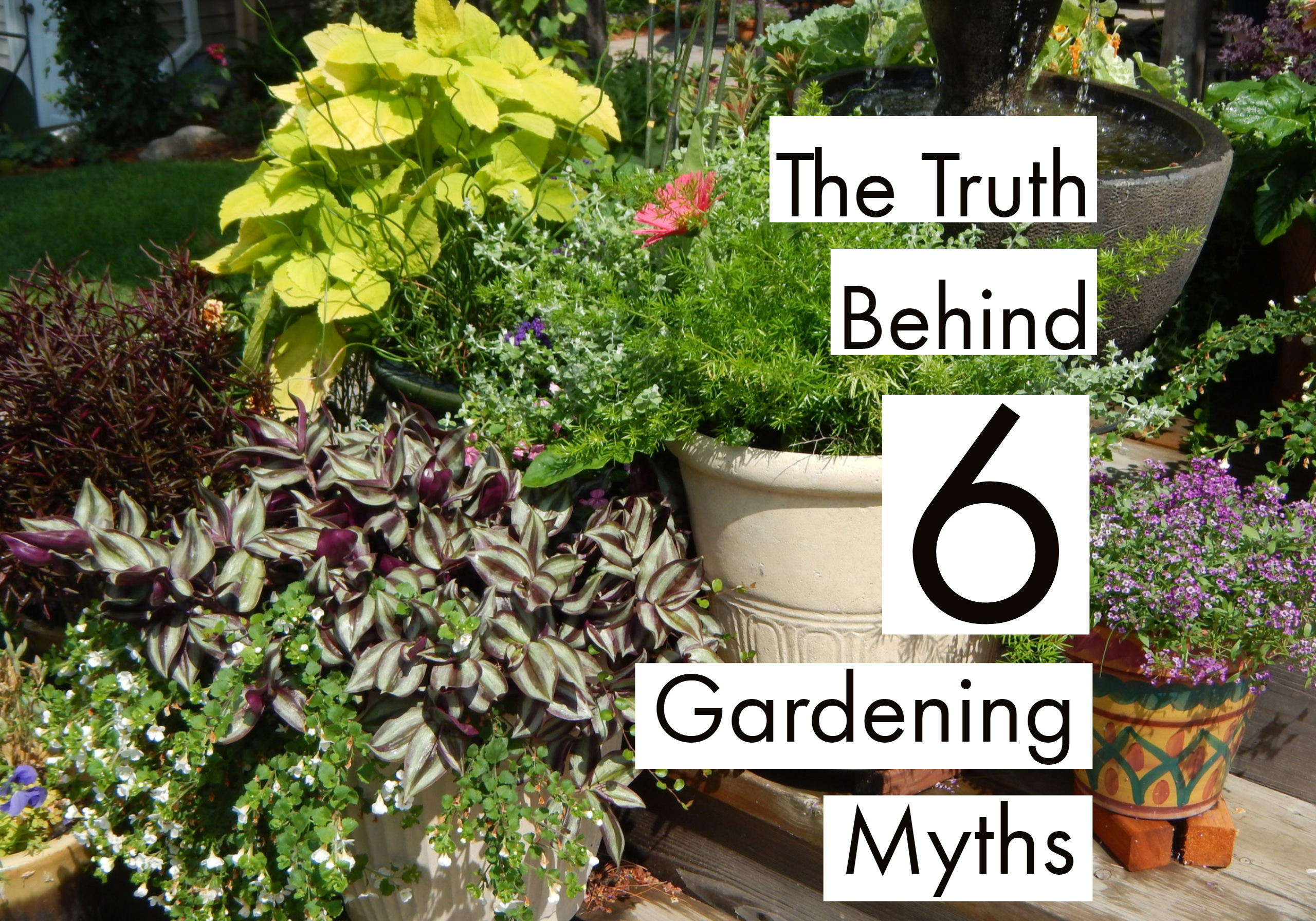As the gardening season gears up, it’s time to bust some myths.
How many times have you heard that leaving grass clippings on the lawn will promote thatch buildup? How many times have you been told to add gravel to the bottom of a plant container to improve drainage? Well, guess what? Neither of those is true.
With all the information out there, some of it’s bound to be wrong. Myths tend to stick around, no matter how many times they’re corrected. Oregon State University Extension experts are out to change that. Once you know the truth, pass it on.
For additional questions, call the OSU Extension master gardeners in your area or submit a question to Ask an Expert.
Myth: You should seal wounds on trees.
Reality: Unlike humans who regenerate the cells in their body billions of times during the average lifespan, trees have developed another strategy entirely. When new cells form over a wound, humans heal. Trees do not heal but seal. There are a series of biological walls that begin to form when a tree is wounded that do not allow pathogens to spread by compartmentalizing the wound site. That’s why if you have ever split firewood you often will see the discolored tissue of a wound, surrounded by completely healthy tissue. So, it’s best not to seal a tree wound, which can inhibit the healing of the tree’s wound and allow disease and insects to enter.
– Al Shay, OSU Extension horticulturist
Myth: Grass clippings cause thatch.
Reality: Clippings don’t cause thatch, thatch is caused by lateral growth of the grass – more specifically, by rhizomes, which are the below-ground lateral growth, and stolons, the above-ground lateral growth. Turf like creeping bentgrass and Kentucky bluegrass produce rhizomes and stolons. The dominant lawn grass in the Willamette Valley is perennial ryegrass, which does not produce rhizomes or stolons and therefore does not accumulate excessive amounts of thatch. Returning your grass clippings when mowing will actually make grass greener, because you are recycling essential nutrients like nitrogen, phosphorous and potassium back into the soil.
– Alec Kowalewski, OSU Extension turf specialist
Myth: It’s a good idea to add gravel to the bottom of plant containers to improve drainage.
Reality: This practice in fact does the opposite and makes the soil more waterlogged. Instead, make sure your pots have drainage holes and use high-quality potting media specific to your needs. Mixes with smaller particles and high components of vermiculite, peat or compost will hold water better for your water-loving plants than a mix with larger particles such as bark, which will have more drainage for those plants that don’t like wet feet.
– Heather Stoven, OSU Extension horticulturist
Myth: Add sand to loosen clay soil
Reality: A resounding “no” is the answer. When sand is added to clayey soil, it will set up into rock-hard adobe once it is watered, making it even more difficult for plants to grow.
What should you add to clay soil to loosen it up? Compost. The addition of organic matter to clayey soil will improve the soil structure, creating more pores and thereby improving the drainage and the capacity for plant roots to work their way through the soil. For a new garden area, work in three to four inches of compost into the soil with a shovel or spading fork. This organic matter will also help to feed the millions of microbes in the soil, helping to drive the soil food web.
– Weston Miller, OSU Extension horticulturist
Myth: Drought-tolerant plants never need irrigation.
Reality: A drought-tolerant plants is one that, when established, would require no supplemental water and will still grow and flower normally. It would get by on what falls from the sky. If you are considering native plants for the garden, then most of the native plants of Oregon (streamside or wetland plants excepted, of course) would fit that definition. Many non-native plants may also be grown without supplemental irrigation. However, all these plants will at least require irrigation to get established. If planted in the spring, they may require irrigation at planting and periodically through the first summer. In mild areas such as western Oregon, the best way to establish drought-tolerant plants is to plant them in the fall and water until it starts to rain. This will get a truly drought-tolerant plant established by the following summer.
– Neil Bell, OSU Extension horticulturist
Myth: Coffee grounds in the soil will help my plants grow better.
Realty: Coffee grounds may benefit some plants (as they break down they add some great organic byproducts), but in many cases they don’t help and might harm the plant. Use coffee grounds sparingly around plants or in your compost pile if wanting to recycle them. Mix them with another organic product if using it as a topical mulch.
Also, coffee grounds will always create an acidic environment in the soil. Research shows that coffee grounds may increase or decrease soil pH and that this change may be short lived. Do not depend on spent coffee grounds to keep a lower soil pH (more acidic soil). You would be better off using elemental sulfur if the goal is to consistently keep a lower soil pH.
– Amy Jo Detweiler, OSU Extension horticulturist
One thought on “What’s the truth behind 6 gardening myths?”
Comments are closed.


Very informative, thank you! Indeed, drainage is the key for successful container gardening. Additionally, if your planter is flat on the bottom it is important to elevate it a bit off the ground. This will encourage good drainage for healthy root systems, also allowing for air-flow to prevent staining or damage to your patio or deck. They make pot feet or for a less visible approach, use plastic rings to get it off the floor. Cheers!